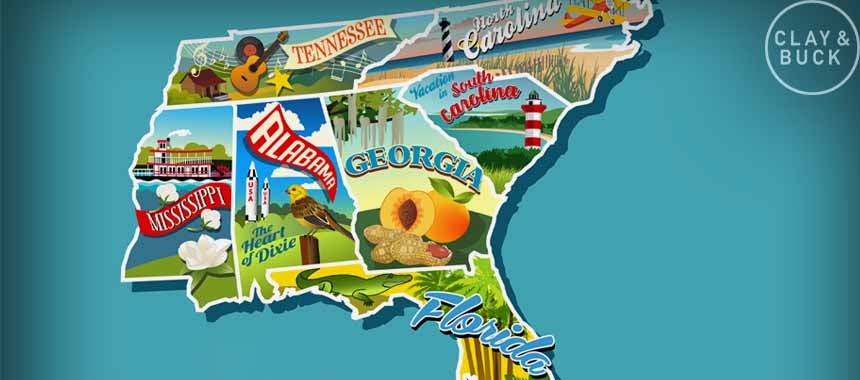Proud Data Nerd Ryan Girdusky on GOP Prospects
20 Apr 2022
BUCK: We have our buddy Ryan Girdusky with us right now. He’s got a great Substack, the National Populist Newsletter, which I highly recommend to all of you. He’s a political consultant and analyst. Ryan, what’s going on?
GIRDUSKY: Hey, how are you, Buck? Thanks for having me on.
BUCK: I’m good. We got a lot to ask you about, a lot of things that are right in your wheelhouse, whether it’s the latest polling among Hispanic voters about the Biden administration, the school board fights — and just school instruction and CRT, and now transgender theory that’s underway.
I actually wanted to start, though, with the DeSantis Florida congressional redistricting. It feels like, at least from an outsider’s perspective, that DeSantis decided that they’re just gonna do it and they’re gonna withstand the criticism that’s gonna come their way ’cause a lot of the Democrat media is upset, to say the least, about the new districting.
GIRDUSKY: Right. Well, so the Democrats were killing in redistricting this year. We talked about this on the show. They were by far and away… They had some big, big states — California, New York, Illinois — had basically redistricted Republicans out of existence in a lot of areas they used to have seats in. Well, Ron DeSantis turned around and rather than signing the State House or State Senate bill for a new map, he made his own map.
 Which would basically clear out six Democrat districts and six Democrats who, I mean, they could run but very, very, very tough time in running and winning. And so Democrats are really furious about this ’cause this will absolutely offset any gains they have made in New York, California, and Illinois, and basically make the map fairly even.
Which would basically clear out six Democrat districts and six Democrats who, I mean, they could run but very, very, very tough time in running and winning. And so Democrats are really furious about this ’cause this will absolutely offset any gains they have made in New York, California, and Illinois, and basically make the map fairly even.
CLAY: Ryan, first of all, that’s gonna be an interesting story if the Florida House passes that tomorrow and then we’ll see whether or not it withstands court challenge because there have been so many cases, as you know, filed across the nation over these redistricting patterns.
GIRDUSKY: Right.
CLAY: But Buck kind of teased it, and I want to ask you what your read is. Most recent Quinnipiac poll, which we talked about, had Joe Biden with a the active approval rating among Hispanics. That was lower than among white people. I think white people was 31%. That set off incredible alarm bells. What is the data that you are seeing reflecting about where Hispanic voters are now with Joe Biden, and where they may be in 2022 as we are about six months out from the midterms?
GIRDUSKY: So, the Hispanic numbers are very different defending what poll you’re looking at. For Quinnipiac, they’re terrible. They’re in the low thirties. Other polls have them (audio drop) in the fifties. Republicans have never, not one time in the history of this country, won the Hispanic vote. Not in 1984, not in 2004, not in 2010, not in 2014. They’ve never, ever, ever won the Hispanic vote.
They’ve won the Asian vote. Historically, in the 1960s, they used to win the black vote, but they’ve never won the Hispanic vote. So I am very, very cautious about saying the Republicans are gonna win the Hispanic vote. Now, under Trump we saw a big boost of support among Hispanics across the entire country. Obviously in South Florida and in the Rio Grande Valley.
 But we saw a big surge in Los Angeles, in New York City, and in Chicago where there is no effective Republican Party campaigning for these Hispanic voters. They just were moving. What we’ve seen in general elections and the Virginia gubernatorial election and the New Jersey gubernatorial election and the New York City mayor election is that while the Republicans probably didn’t gain much with Hispanics, they also didn’t lose from their 2020 numbers.
But we saw a big surge in Los Angeles, in New York City, and in Chicago where there is no effective Republican Party campaigning for these Hispanic voters. They just were moving. What we’ve seen in general elections and the Virginia gubernatorial election and the New Jersey gubernatorial election and the New York City mayor election is that while the Republicans probably didn’t gain much with Hispanics, they also didn’t lose from their 2020 numbers.
So it’s not like we can expect a big swing back to the mid-twenties where Republicans usually are with Hispanics. Maybe they will stay in the mid- to high thirties, maybe low forties. But I think the low forties is the most we could hope for with Hispanics — which is a major, major, major thing.
I see when you say look at races with the Hispanic vote, what you’re going to look for and where you’re going to look to see if this gain is really sizable, especially with noncollege educated Hispanic men who work very, you know, day-labor jobs, oil-rig jobs, farm jobs. You want to look at the Central Valley of California, which is huge farm country.
You want to look at the entire state of Nevada, and you want to look at south Texas, where Democrats had a monopoly on almost every one of those seats. If Republicans walk out of those — out of that election night — with, you know, eight of 10 seats, we can see that really Hispanic men without a college degree have moved extremely strongly towards the Republican Party.
BUCK: We’re speaking to Ryan Girdusky, founder of the 1776 Project PAC and also has got the National Populist Newsletter on Substack, which you can also subscribe to. Ryan, the school issue feels like right now it’s gotten… For a while, CRT was it center of it and especially during the pandemic with all the Zoom instruction that was going on.
Parents were showing up at school board meetings and say, “Hey, what are you guys teaching our kids?” and the school boards and the school bureaucrats were essentially saying, “Shut up, peasants! We teach them ’cause we’re the experts.” That didn’t go over well for them, and I know you’ve been very involved with trying to get people to run for school boards to get more accountability and sanity in the teaching of their children.
How is that program moving along? What are we see in terms of the effect that this has now still across the country? And given what’s gone on with Ron DeSantis and the Parental Rights in Education bill in Florida, do you expect — or do you expect that this is gonna be a major part of mobilization for some key constituencies going into the midterm elections?
 GIRDUSKY: So, I mean, education is a huge, huge, huge issue, especially for people the Republicans are kind of like lost in the last few years: Suburbanites and women. The 1776 Project PAC which I run, 1776ProjectPAC.com if anyone wants to go on, see where they’re running or donate or anything. We’ve seen a huge surge of parents not only just wanting to run for school board, but collecting materials for what their school is actually teaching them.
GIRDUSKY: So, I mean, education is a huge, huge, huge issue, especially for people the Republicans are kind of like lost in the last few years: Suburbanites and women. The 1776 Project PAC which I run, 1776ProjectPAC.com if anyone wants to go on, see where they’re running or donate or anything. We’ve seen a huge surge of parents not only just wanting to run for school board, but collecting materials for what their school is actually teaching them.
Believe it or not, a lot of people assume that this is a problem in blue cities and blue counties. This is in the reddest of red counties. I’m doing right now — the 1776 Project PAC is involved in — about a dozen races coming up this May and July in Maryland, Georgia, and Texas and in Colin County, Texas, Tarrant County, Texas. These are red counties. These are counties that have for a long time supported the Republican Party and red areas of red counties.
And they have absolutely horrendous CRT going on. Frederick County, Maryland, absolutely. That was one of few places that actually shocked me. So if you think that you’re immune from it ’cause you moved to a nice Republican county or ’cause your kids go to private school, I have to tell you, that’s not gonna sit there and stop it.
The problem comes from the fact that the graduate programs in colleges, programs that teach you how to be teachers, but more importantly, teach you to be administrators. They are the ones that are infusing the CRT and teaching them how to incorporate diversity, equity, and inclusion and social/emotional learning in every form of the class from math class, to history class, science or whatever. This is really where this entire process is being fused.
And it’s gonna take Republican governors. You know, I supported the Ron DeSantis bill, but it’s gonna take Republican governors really going to these publicly funded colleges and going after their accreditation program because these are the institutions that are churning out armies of “diversity, equity, and inclusion” administrators that are funneling in schools and work — and learning how to work the system from the inside.
CLAY: Ryan, I’m really curious on the Hispanic numbers. I know you’re skeptical of some of the — like you said — Quinnipiac numbers that came out in their poll. At what level of Republican support does the Democrat Party as it is presently constituted not the work anymore and let me explain what I mean by that.
If 30% of black people started consistently voting for Republicans, the Democrat Party doesn’t exist anymore. They can’t win. Is it 40%? Is it 45%? What kind of basic number would Republicans need to get to where the Democrat coalition to get elected doesn’t work if they don’t get what percentage of those minority voters?
GIRDUSKY: So here’s the thing about the Hispanic numbers that people often forget. They don’t live in good states, Hispanics. They live in states like California and New York and Illinois, states that are not gonna flip. Probably… I don’t have the exact argument, but if Trump probably got 65% of the Hispanic vote, he still probably would have lost the 2020 election.
 Romney could’ve got 75% of the Hispanic vote and would have lost the 2012 election against Obama. That it’s not they just — they don’t live in states that the black voters do. Black voters live in North Carolina and Pennsylvania and Michigan and Wisconsin, and Hispanic voters, they only live in a very few swing states: Nevada, Arizona — Texas is becoming more of a swing state — and they’re growing their populations in Georgia and North Carolina, but it’s still very, very soft.
Romney could’ve got 75% of the Hispanic vote and would have lost the 2012 election against Obama. That it’s not they just — they don’t live in states that the black voters do. Black voters live in North Carolina and Pennsylvania and Michigan and Wisconsin, and Hispanic voters, they only live in a very few swing states: Nevada, Arizona — Texas is becoming more of a swing state — and they’re growing their populations in Georgia and North Carolina, but it’s still very, very soft.
CLAY: That’s fascinating.
GIRDUSKY: Yeah, they don’t live in important areas. What is more important is what are noncollege-educated white voters doing? Are they turning out? If you were to increase the noncollege-educated white voter — and, by the way, there’s over 40 million noncollege-educated white people who are not registered to vote. If you were to increase that by 3%, Republicans could not lose a national election, versus if you go to 65 or 70% of the Hispanic vote, they still probably can’t win.
BUCK: Ryan, do we have good polling, good data on that point to drill that a little more into among noncollege-educated white voters, top issues? Is that something that there’s been recent enough polling that we have a sense of what the top issues are? I mean, obviously assume economy, but I’m wondering is immigration right up there? What are the main issues?
GIRDUSKY: Immigration’s a huge, huge issue. It is the isolation of working-class people. It’s the fact that if you are a 60-year-old man and you sit there and you bought your house in eastern PA 30 years ago, and in 30 years’ time your neighborhood went — like Hazelton, Pennsylvania — from being 95% white, non-Hispanic white, to being 85% Hispanic, and you can’t speak the language; you feel completely isolated by your social setting.
That immense, constantly isolation feeling of noncollege-educated whites is a major motivator to why they moved to Donald Trump in 2016, especially in the Republican primary. But it’s also inflation is killing these people. Opioids are literally killing these people — and for a lot of older voters, they live in communities that are on the death’s door. There is no infrastructure.
There’s no major initiative to sit there and make sure that their kids and grandkids can stay in the same community, so you have three or four generations living in the same area. They have to move to Florida or Texas or wherever to sit there and have a chance at anything. I think those are all really the major issues that we speak to.
But most importantly, here’s the problem: Republicans on television and analysts want to scream and jump and yell that they got, you know, 5% more of the black vote nationwide but they still lost the election. They will never sit there and scream and yet and have excitement that they won more of the noncollege-educated white vote.
 If Republicans would just stop being embarrassed by their own voters, that would do a lot to sit there and maybe motivate some — and actually work to sit there and get those districts ’cause vote in high numbers. One of the worst-performing districts in Georgia as far as turnout goes is Marjorie Taylor Greene’s district where everyone, if they voted, would be a Republican! So actually getting in those areas rather than have your 500th inner-city meet-and-greet, you’ll move a lot more voters in a shorter time — and the threshold actually is much, much lower.
If Republicans would just stop being embarrassed by their own voters, that would do a lot to sit there and maybe motivate some — and actually work to sit there and get those districts ’cause vote in high numbers. One of the worst-performing districts in Georgia as far as turnout goes is Marjorie Taylor Greene’s district where everyone, if they voted, would be a Republican! So actually getting in those areas rather than have your 500th inner-city meet-and-greet, you’ll move a lot more voters in a shorter time — and the threshold actually is much, much lower.
BUCK: Ryan, I know you’re involved in a lot of projects. Where do you want people to go to follow your work?
GIRDUSKY: 1776ProjectPAC.com.
BUCK: There you go. Ryan Girdusky, folks. He knows his stuff. Ryan, thanks so much.
GIRDUSKY: Thank you.
BUCK: We bring people who bring the numbers.
CLAY: I love the data people. They probably don’t like being called nerds, Buck, but they can actually share real data as opposed to just opinion. Informed opinion is great opinion, and he really brings the numbers.
BUCK: Can confirm Ryan is honored to be called the data nerd when it comes to politics.
CLAY: Yes.
BUCK: He knows his stuff.
Recent Stories

C&B Say Thank You for Listening and Watching!
Wherever and however you choose to consume the show, we are thankful!

Culture Wins: Southern Schools Are Booming for a Reason
Clay relates a personal story that illustrates the shift.

From Lunges to CFP Predictions, Clay Catches Up with Markwayne Mullin
The Oklahoma senator has some fun -- and talks some serious issues, too.

VIP Video: The Left's Grifting Liars Come for Your Guns
Australia's draconian gun laws failed, so the left wants more laws.






